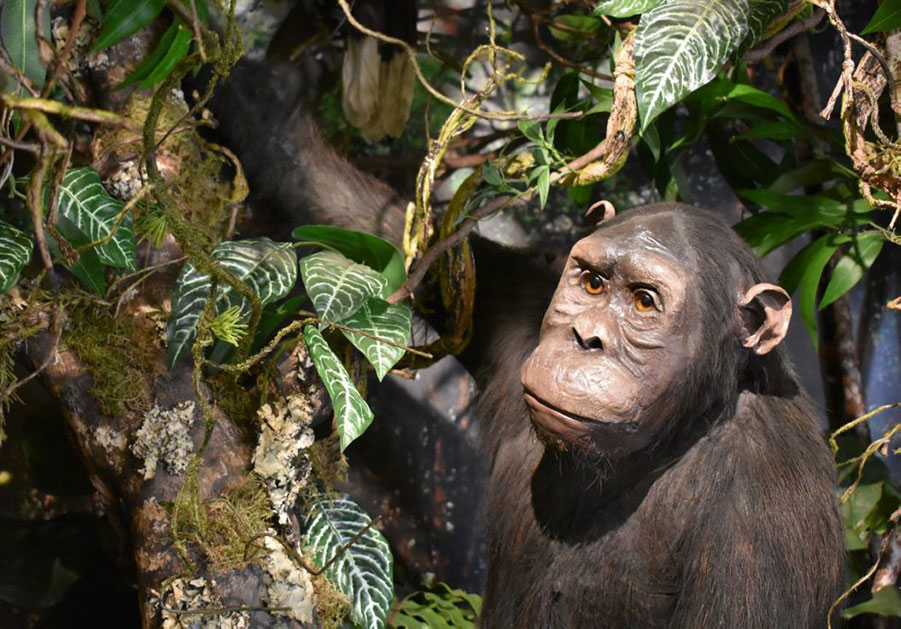
03 Juil A day at the museum… of wonders! [part 2]
As soon as I enter the main building I find myself in front of the Historical Gallery which introduces the permanent exhibition area and illustrates the history of the museum and its collections. It traces back in time the history of the museum, from the 1900s to its origins in the 1550s with the Room of Wonders.
The wonders here however are everywhere, scattered along the corridors of the Charterhouse, all strictly preserved in their display cases like precious treasure: big mammals, among which some extremely rare and extinct specimens, collections of all different sizes and colours of birds (in particular the fine example of the lyrebird), reptiles and amphibians preserved in formaldehyde, giant skeletons of cetaceans, 3D reconstructions of marine animals.
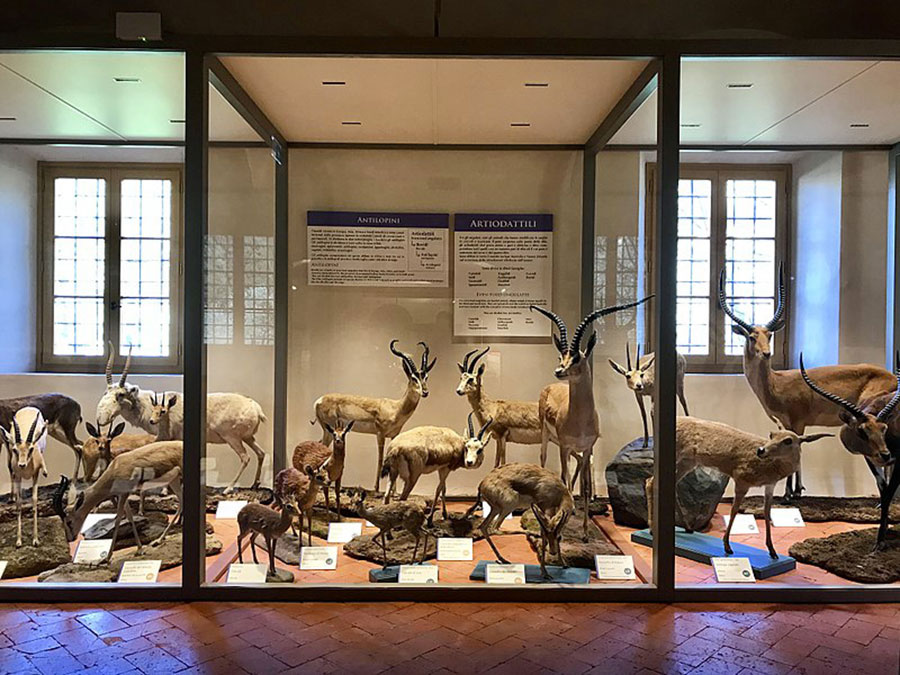
To my right I notice a mysterious corridor, filled with plants and strange creatures. It is the Gallery of geological eras: a journey through time which illustrates the evolution of our planet over the millennia and the animals which belong to each period.
In the last room, completely blue, it’s like being under the ocean, surrounded by sharks, fish, dolphins (actually their ancestors); truly extraordinary!
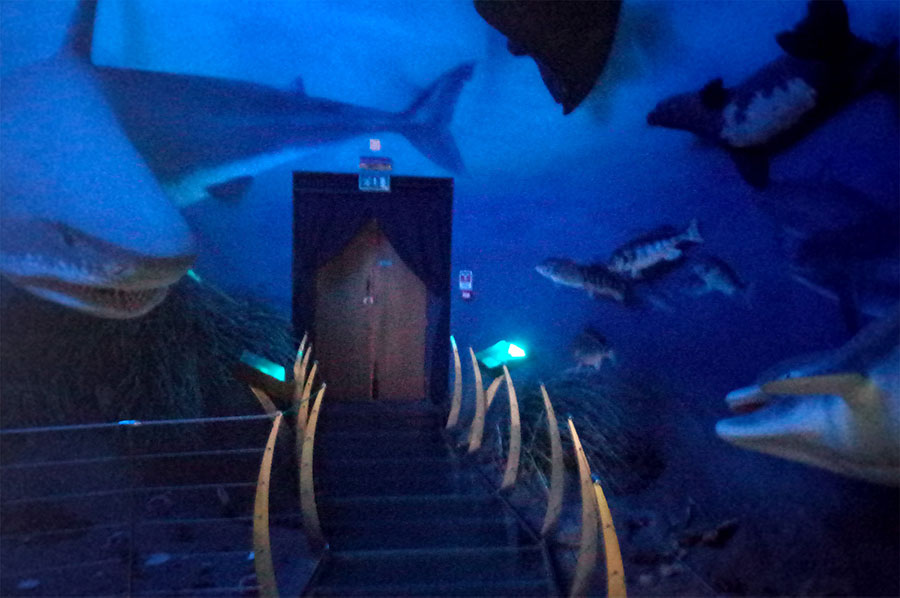
The legendary WunderKammer
I retrace my steps and at the end of the main corridor there is a small entrance: here, where I least expected it, is the crown jewel of the museum: the legendary Wunderkammer.
The first impression is sensational: a relatively small room, but absolutely fascinating, brimming with, obviously, wonderful objects: minerals, fossils, shells, corals, starfish and other oddities from all over the world, displayed in elegant antique cabinets, on which are perched many embalmed animals, like guardians of this exceptional historical natural collection. The environment is so intimate and welcoming you no longer feel like a modern day visitor, but you are catapulted back in time to a different age.
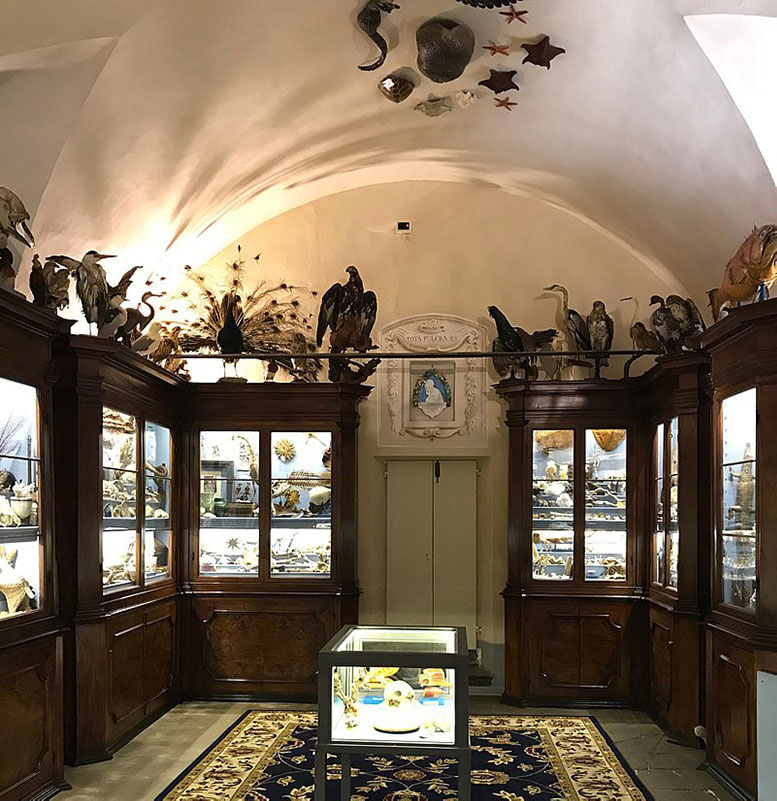
To the left of the Wunderkammer there is a flight of steps which leads up to the Mammal Gallery. This houses a multitude of animals: reindeer, zebras, bison, antelopes, anteaters, jaguars, lions, hippopotami, rhinoceri, kangaroos, duck-billed platypi and many others. They are all exceptionally preserved and beautifully presented and bring to mind scenes of the film “Night at the Museum”…
The Cetacean Gallery and the world’s largest animal ever
I go up to the top floor to the Cetacean Gallery, over 100 metres long, which offers beautiful views over the surrounding landscape. This gallery houses a spectacular collection of existing cetaceans (among which the biggest animal to have ever existed on Earth, the blue whale, over 24 metres long!) as well as fossil specimens of species which existed millions of years ago. Furthermore there are also life-sized models of whales and dolphins.
Along the corridor there are screens which explain the evolution over time of these magnificent marine mammals. At the end of the gallery, inside the skeleton of a whale, an unexpected character appears: Pinocchio, the famous wooden marionette, who in the story ends up in the stomach of a whale. For the children it will definitely be a special surprise.
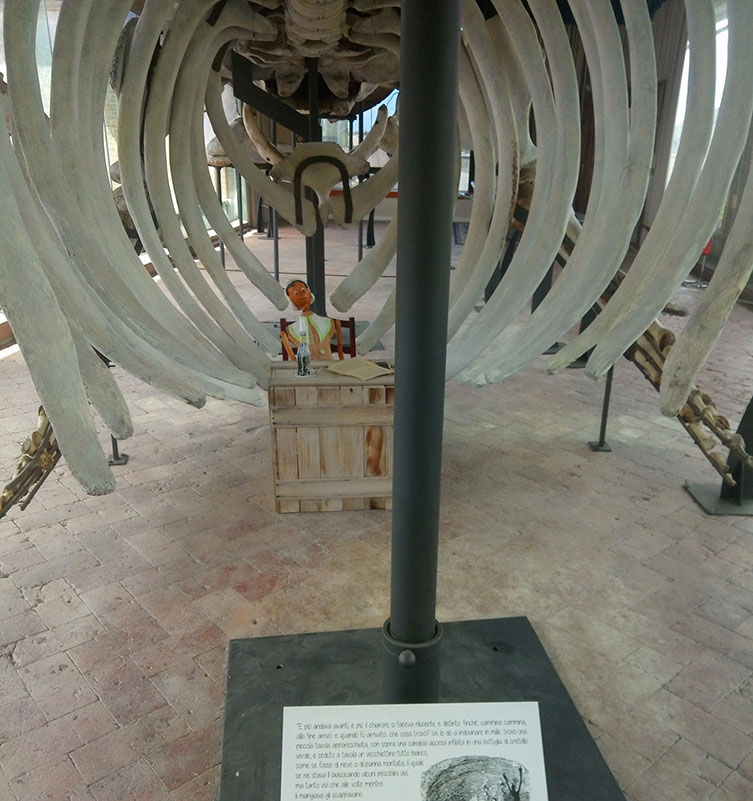
The Primate Gallery, opened in April 2019
I return to the floor below and go along the Mammal Gallery and reach the Primate Gallery, just recently opened, where many different specimens of these mammals are exhibited, located in large display cases surrounded by the reconstruction of their natural habitats.
You can observe different ecosystems: the luxuriant south American jungle, the thorny forest of Madagascar (where the formidable ring-tailed lemur lives), the ruins of an Indian temple and the tropical forest in Borneo.
In front of these there are interactive screens where you can find out the names and interesting facts about the animals on display.
In the room opposite there are three other display cases which illustrate the evolution of mankind (after all, we too are primates…).
And finally, the Mineral Gallery
Further on I reach the Mineral Gallery. Here thousands of specimens from all over the world are on display, all incredibly beautiful: crystals, sparkling gems, precious stones, unusual rocks, among which a historical collection of meteorites, including the famous octahedrite of Bagnone, weighing over 48 kg and the largest Italian meteorite.
I follow the stairs back to the courtyard: so my visit draws to an end. It has been an unique experience, spectacular but also educational. I have discovered aspects of nature which I was not aware of and have made me think about the difficult but important issue of the relationship between humankind and nature.
I highly recommend you visit this extraordinary museum, adults and children both. I’m sure it will be a fun and unforgettable experience!


